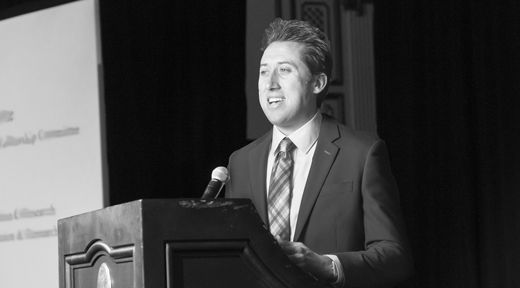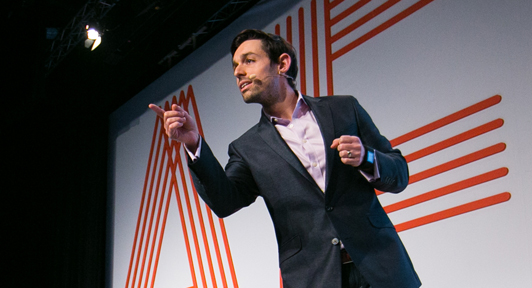
Keys to Performing Better Under Pressure
| We looked at the top 10% performers, and we discovered that the bottom 90% have a haphazard approach to dealing with pressure. The top 10%, though, plan and prepare, utilizing scientifically-based strategies to perform under pressure. | |
| |
 | What intrigues you about the concept of “performing under pressure?” |
 | I love learning about the latest neuroscience research of how our brain works, then taking those insights and applying strategies to be more effective at work and at home.
For example, in our New York Times bestselling book, Performing Under Pressure, we describe our study of 12,000 people. We looked at the top 10% performers, and we discovered that the bottom 90% have a haphazard approach to dealing with pressure. The top 10%, though, plan and prepare, utilizing scientifically-based strategies to perform under pressure. Then add in the latest neuroscience of how our brains respond when we appraise pressure moments as a crisis (see below), and you’ve got amazing new information that helps people do their best when it matters most. That’s what gets me jazzed! |
 | How do you define “pressure moments"? |
 | We identify pressure moments and situations as “stressful moments that matter,” and those pressure moments have three characteristics: • When the outcome is Important • When the outcome us Uncertain • When we are responsible for or being judged on the outcome |
 | Why is managing pressure important to being a better, more productive leader? |
 | Our brains process more than 11 million pieces of information a day, so when there is no tension or pressure, people don’t notice or recall a leader’s impact. When we are under pressure, however, our brains are wired to become very focused on what is happening and to encode that in our memory. What people will remember about a leader is how they showed up when there was pressure – how they handled conflict, the tough decisions they made that not everyone liked, or how skillful they were in a tough conversation.
How we handle pressure is not just the key differentiator for our careers, it’s also critical in our personal life. John Gottman’s research on marriage shows that a couple’s ability to handle their pressure moments is the number one factor in determining what couples will stay married and which ones will get divorced. |
| Our default brain pattern is to appraise a pressure moment or situation as a crisis. This can lead to fatigue, tension headaches, and many other negative health outcomes. | |
| |
 | How does the human brain typically respond to pressure? |
 | Our default brain pattern is to appraise a pressure moment or situation as a crisis. When we do that, the brain causes the smooth muscles in our blood vessels to constrict, allowing less oxygen to get to the body and brain. The lack of oxygen diminishes our cognitive abilities. It impairs our judgment and decision-making. It also reduces our ability to focus and stay connected in key relationships. This can lead to fatigue, tension headaches, and many other negative health outcomes. |
 | What are some of the ways leaders can handle high-pressure situations more effectively? |
 | Pressure Solution #1 in section two of the book (which has 22 Pressure Solutions in total) is to re-appraise our pressure moments as a challenge we need to overcome, or even an opportunity. When we reframe the pressure moment in that way, our brain causes our blood vessels to dilate, which allows more oxygen to get to our body and brain, which in turn enables us to use our full cognitive abilities in our pressure moments. That is, it helps us to be our best when it matters most. |
 | What are some of the ways you use your background in mathematics and technology to help leaders? |
 | Most people, when they hear the terms “Emotional Intelligence” or “Performing Under Pressure” think it’s going to be some type of soft and squishy, rah-rah session. With my analytical nature, I am able to take a more research and neuroscientific approach to these topics. Now, don’t worry that my sessions are overly complicated and tech-heavy. My business partner – Dr. JP Pawliw-Fry – has an amazing ability to simplify these insights into very relevant and easy to understand learning.
Together we’ve developed powerful, scientifically-based strategies for dealing with pressure that are easy to learn and apply. |
 | What is the “last 8% of the conversation,” and why do so many leaders (and people in general) tend to avoid it? |
 | Great question. This is from our "Preforming Under Pressure: The Three Conversations of Leadership" program. What is the Last 8% Conversation™? When pressure increases in a feedback discussion, a performance review, or any other difficult conversation, many individuals choose to avoid (sometimes unknowingly) the last and most important part of the conversation - the part that really needs to be said.
The reason we avoid the last 8% is that when there is pressure in a conversation, our brains are wired to avoid the conflict, to not want to upset another person, or to become defensive when the other person reacts. Our Three Conversations of Leadership program provides the skills to help people approach their difficult conversations in a way that does not trigger the other person, allowing them to hear and process the feedback or difficult news. =============================================== |















